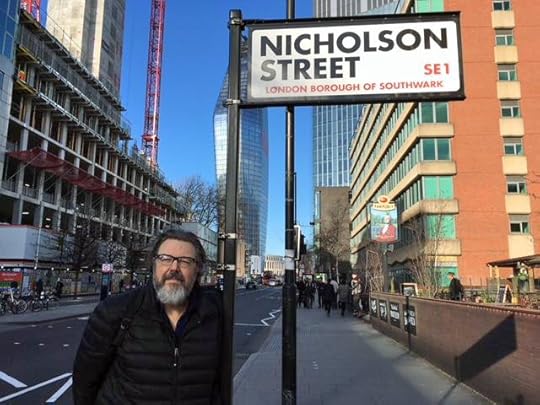Geoff Nicholson's Blog, page 38
March 20, 2018
SUBURBAN STRAINS

It being a Sunday afternoon, I combined my afternoon drift with a visit to Skylight Books to see Lynell George read from her book After/Image. And to get a signed copy, of course. Lynell George is a flâneuse, a pedestrienne, and above all a woman who walks and looks and takes photographs and writes about it. Also an Emmy winner. Cool.
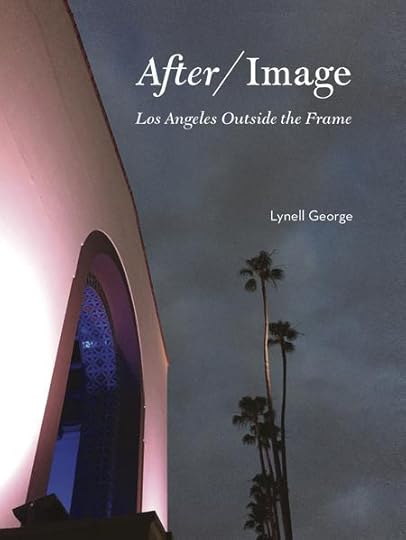
As is the way of these things, I opened the book at random and found a reference to Dorothy Parker describing Los Angeles as “seventy-two suburbs in search of a city.” This is apparently a well-known sneer but I’d never heard it before. You’d think I would have. And as, Lynell says in her book, some of us don’t think that’s such a terrible thing. One of the 57 books I regularly think about writing but probably never will is titled In Defense of Suburbia.
I’ve been trying to find the source of that Dorothy Parker quotation, and as far as I can tell there isn’t one. Adrienne Crewpresident of the LA Chapter of the Dorothy Parker Society and a tour guide says in a blog post, “I am asked on a regular basis if Dorothy Parker actually said that Los Angeles is ‘72 suburbs in search of a city.’ The answer is...probably not. “The quote has been attributed to Dorothy Parker but it's really a paraphrase of Aldous Huxley's bon mots found his 1925 book, Americana. He wrote that Los Angeles was "nineteen suburbs in search of a metropolis" and he was probably quoting someone else who initially said Los Angeles was seven or six suburbs in search of a city. The witticism expanded from there. At times it was attributed to H.L. Menken, Robert Benchley, Alexander Woollcott and Dorothy Parker. Most likely it was Mencken who used the phrase in an essay published in the April 1927 issue of Photoplay magazine after visiting Los Angeles for three weeks in 1926.” And yes, it does sound like the kind of thing you might say after three weeks.
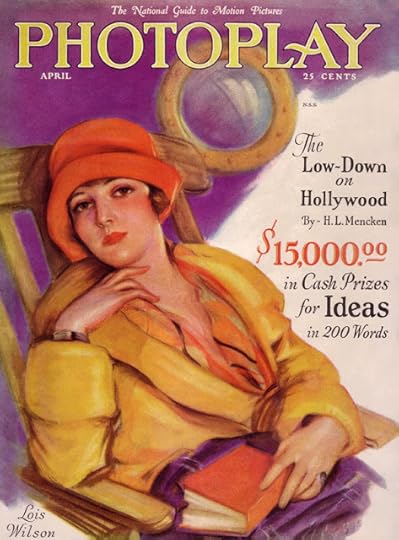
I don’t know if Dorothy Parker got around much when she worked in LA but the only places she lived were Beverly Hills and West Hollywood, thereby leaving her some 70 suburbs short. This is her, perfectly nice suburban bungalow on Norma Place.
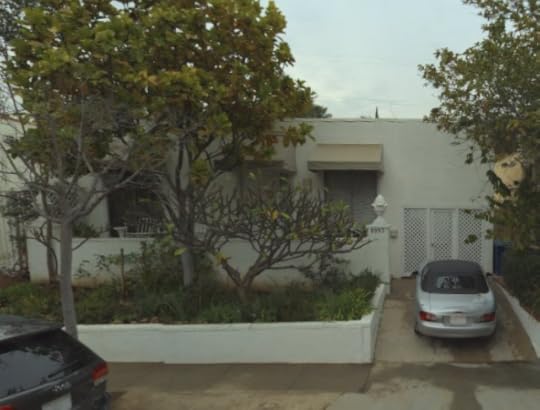
But I did wonder about the basic premise: just how many suburbs are there in LA? Wikipedia has a “List of districts and neighborhoods of Los Angeles” which numbers just under 200, but by no means all of them are suburbs. “The Old Bank Distrct” for instance is just the area where the banks are in downtown, and therefore part of the “urb.” And some of theplaces I’ve never heard of such as the “Platinum Triangle.”
As a local, I could probably tell you the difference between Hollywood, East Hollywood, Hollywood Hills, Hollywood Hills West, and Hollywood Dell, though I’m sure you wouldn’t thank me for it, and suburban though they may all be, I’m pretty sure they don’t constiture four separate suburbs. Still, with bit of casuistry, I think you probably could identify 72 distinct and separate suburbs in LA, if that’s your pleasure. While I was in the bookstore I saw this intruiguing volume by Ed and Deanna Templeton titled Contemporary Suburbium. The suburbian in question is Huntington Beach, and the book is one of those concertina jobs and I was tempted to but a copy, but I had already spent my book dollars for the day. Next time.

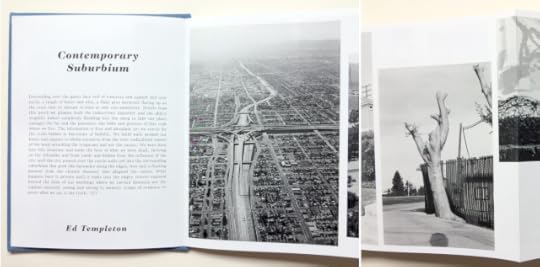
Some of the suburban stuff I saw on my walk looked like this:
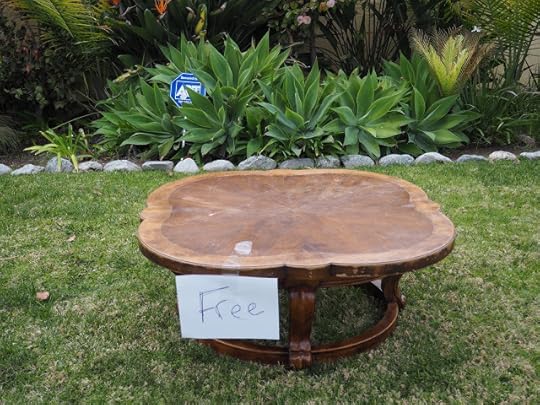
And this – Jesus and the Gnomes (which could easily be the name of a band from Huntington Beach):

And I couldn’t help thinking they were raising expectations a little too high at the Dresden:
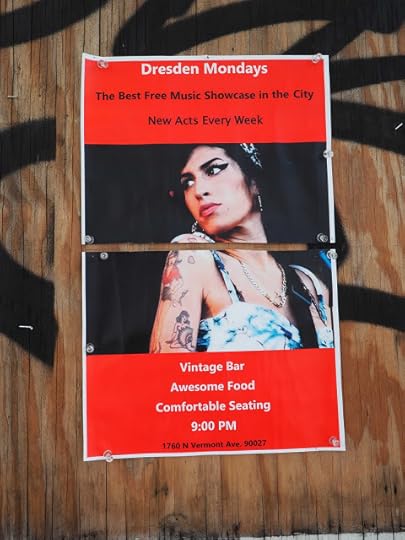

Published on March 20, 2018 12:58
March 19, 2018
OF WALKING IN ICE PLANTS

So here’s another thing that happened. I went to the see the newly refurbished Beverley Hills Cactus Garden (note for pedants, it’s more correctly a xerophile garden – there are plenty of plants in there that aren’t cacti).
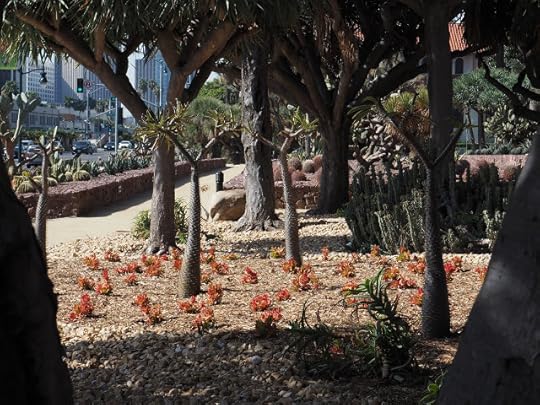
Also, as I remembered it, it wasn’t a place that was likely to benefit from refurbishment – surely the whole point about cacti is that you just leave them alone. It was a walk, but I knew it wasn’t going to be much of one, since the place just isn’t very big.
 Before
BeforeThe real joy of the Beverly Hills Cactus Garden, refurbished or not, is that it’s a chunk of desert that sits right there alongside Santa Monica Boulevard – the old Route 66 – you walk among the opuntia and the pachypodia as the traffic flies by.
 After
AfterYou know me, I can look at cacti all day, every day, but once you’ve walked back and forth a few times you’ve pretty much “done it.” If you think, oh maybe I’ll sit on a bench and soak up the vibe for a while, well you’re out of luck. There are no benches and although you can sit on a wall, you’re not going to be comfortable lingering for very long. This is no doubt deliberate. I suppose they want to keep out the riff raff, the homeless, and in fact just about anybody with time on their hands.
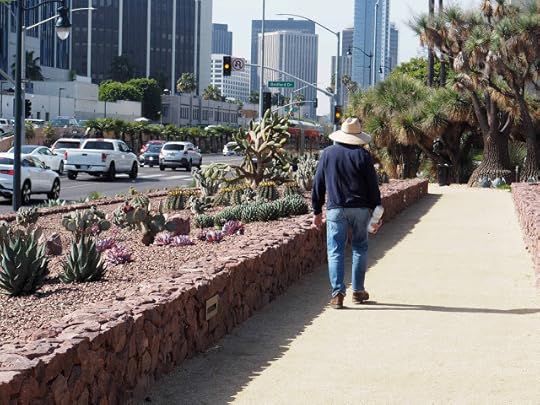
And so being in need of a bit more of a walk I took a stroll around the neighborhood. I always say that I'm surprised they even let me in to Beverly Hills. And I saw a house with a fabulous patch of color in front of it, with a gardener standing in the middle of what turned out to be a sea of flowering ice plants.

I took a picture and the guy saw me, and he shouted to me, quite cleverly I thought, “Hey, am I doing something wrong?”And I said, “No, looking at that garden I’d say you’re doing something absolutely right.”This both amused and wrong-footed him.“Because the other day,” he said, “I was working, and this guy from the power company came by and he took my picture with his phone. And I said to him, ‘Hey, why did you take my picture?’ and he said he hadn’t taken my picture but I saw him take my picture.” He seemed more indignant about being lied to than about the picturing-taking itself.So I said, “Well yes, I suppose I did take your picture but really it was the garden I was photographing. It looks fantastic.”And of course since he was the man who looked after the garden he was obviously pleased and flattered by this, and of course I did actually mean it, and also from the way I was talking I was obviously not threatening.So we had a conversation about gardens, and he said the ice plants didn’t usually flower at this time of year, but there’d been rain and then a very hot spell and this had confused the plants and they’d burst into flower. Usually July and August were the times when those particular ice plants looked their best.
I said I’d like to come back then and take another picture and he said, “If I’m here and you take my picture I’m going to want paying.” I said I thought that sounded very reasonable.


Published on March 19, 2018 13:11
March 15, 2018
SOULS AND HEALS
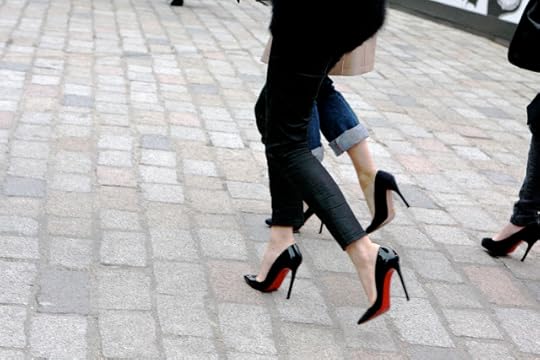
I’ve been seeing articles much like the one below for pretty much all my adult life. Yes, high heels are sexy, yes most men like to see women in high heels, yes quite a lot of women like wearing high heels, but we know that they’re bad and wrong, unhealthy, symbols of sexual oppression and whatnot.
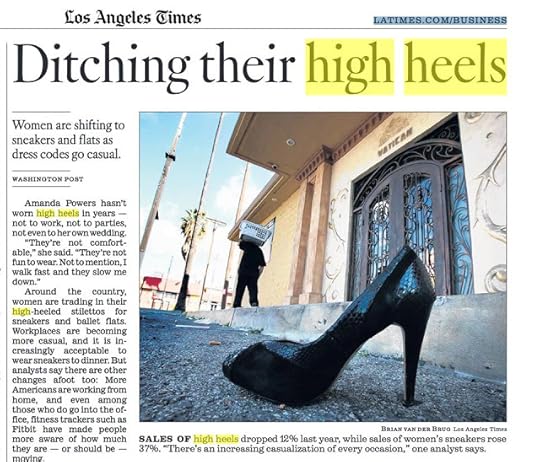
A stroll along Hollywood Boulevard on a Friday or Saturday evening would suggest that not every woman in town has got the memo, but obviously this isn’t really a walking issue. Nobody wants women to walk miles in their high heels, it’s enough just to strut across the floor and perch on a bar stool. It’s enough just to slip on the Jimmy Choos and pose around in the boudoir. I know that human sexuality is a savage garden but even so I find it hard to believe anybody ever asked a woman to pose around the boudoir wearing sneakers.
And now as fate would have it Gal Gadot has become the new face of Rebok. According to her Twitter feed she’s "pumped." Apparently $10 million dollars is changing hands.

On the other hand, when Gal Gadot is at an event celebrating “the power of women,” different imperatives apply. It's a minefield, isn't it?


Published on March 15, 2018 11:43
March 11, 2018
WALKING UNDER PORCHES

When I first read The Big Sleep back in England, back in the day, I must certainly have read the passage below, but just as certainly I must have skimmed over the term "porte-cochere." As follows:
“There was dim light behind narrow leaded panes in the side door of the Sternwood mansion. I stopped the Packard under the porte-cochere and emptied my pockets out on the seat. The girl snored in the corner, her hat tilted rakishly over her nose, her hands hanging limp in the folds of the raincoat. I got out and rang the bell. Steps came slowly, as if from a long dreary distance. The door opened and the straight, silvery butler looked out at me.” (“Silvery butler” is just stupendous, isn’t it?)
When I moved to Los Angeles I reread the Chandler novels and I remember looking up porte-cochere. Merriam Webster offers two definitions: 1: a passageway through a building or screen wall designed to let vehicles pass from the street to an interior courtyard 2: a roofed structure extending from the entrance of a building over an adjacent driveway and sheltering those getting in or out of vehicles.
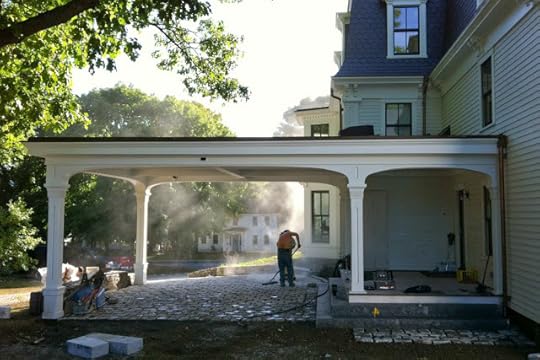
I guess it's an American thing, and I think the latter is more common - you’ll find version at thousands, maybe hundreds of thousands, of American motels. However if, as many people think, the Sternwood Mansion is based on the Greystone Mansion (aka the Doheny estate), then it’s more likely to be the former, though of couse the two things aren’t mutually exclusive. Here’s the porte-cochere at Greystone, through which I have walked:
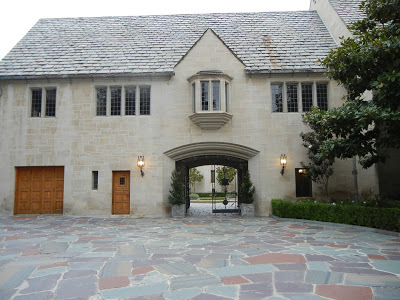
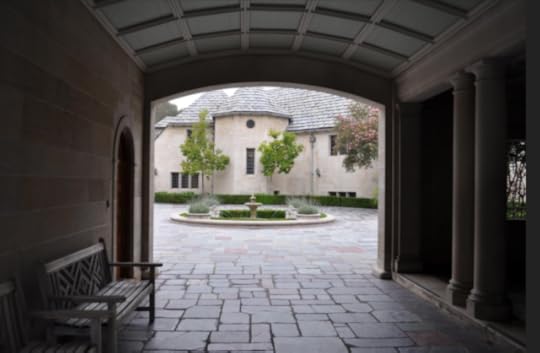
I’d have thought the term was fairly rare in British architecture although Wikipedia offers this image of the one at Nottingham station - though I'm not at all sure that anybody in England would refer to it by that name:

You know, off hand, I can’t tell you whether a porte-cochere appears in the Bogart movie of The Big Sleep, but anyway, here’s a picture of Martha Vickers – the snoring girl, here fully awake.
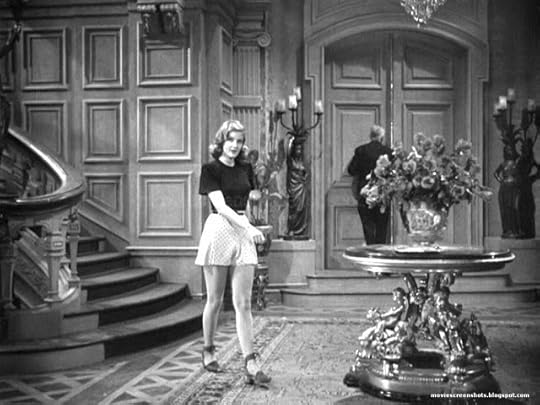
So, the reason I mention this now is because other day I was walking in the edgelands of Beverly Hills where, compared to the rest of LA, there isn’t so very much building and redevelopment going on. But there was one lot where a house had been demolished and a new one was being built. And there was this sign on the fence describing the project as a “NEW 2 STORY SFR WITH PORTE COCHERE” (SFR stands for “single family residential” – keeps out the riff-raff).
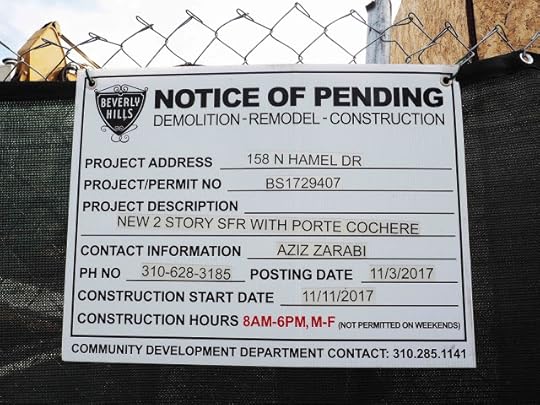
I knew I was out of my comfort zone, and I'm also pretty sure you'd have to go a very, very long way in England before you saw a sign like that.

Published on March 11, 2018 20:24
OLD CARY GRANT JUST FINE
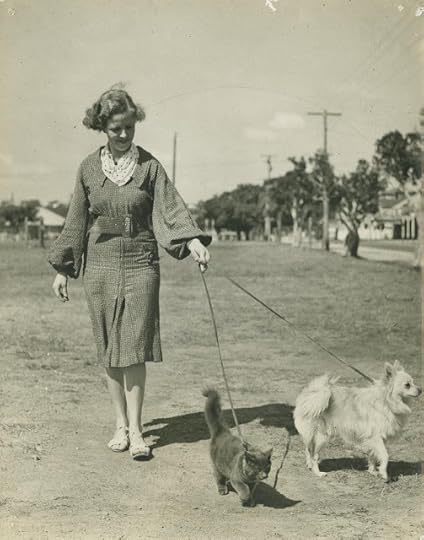
I have, by degrees, and by default, become a cat person. This surprises me a bit. When I was a kid I desperately wanted a dog but my parents thought I wasn’t ready for the responsibility, and that I’d never walk it. They were almost certainly right.
These days, however, I sometimes think it would be OK to have a dog because I could combine exercising it with my psychogeographic drifts, although in the end I think I’m still not ready for the responsibility. And in any case, I have become a cat person.
 The cat, not much of a walker.
The cat, not much of a walker.A cat joined the household, some years ago now, and she has gradually seduced me – (and yes, there was some inappropriate touching along the way, on her part). And once in a while I think maybe I could combine my own walking with cat walking, with the feline striding along beside me on a leash, although I’m told this is only possible if you start when the cat is very young indeed.
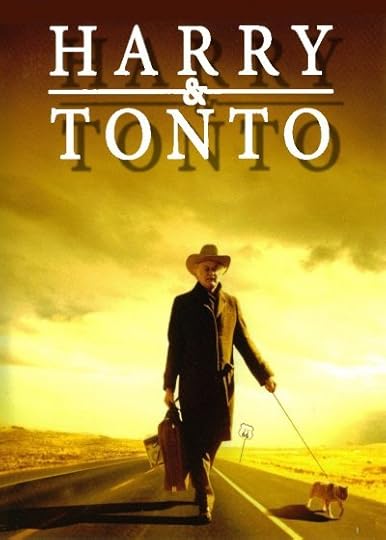
And so the other night I watched Harry and Tonto, a pretty good, if very much of its time (1974), movie about an old geezer (Art Carney who is actually playing a character much older than himself) who goes on a road trip with his cat Tonto, who indeed has a collar and a leash. They end up on Hollywood Boulevard opposite Pickwick Books and yes, that is Larry Hagman:
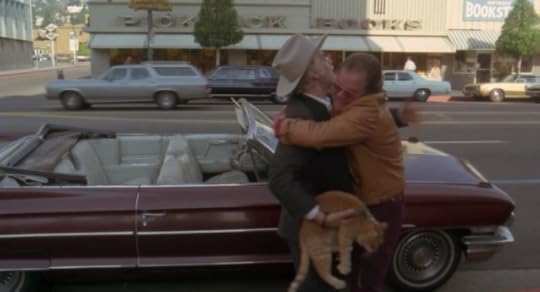
Pickwick Books used to look like this on the inside:

Why can’t there be a bookshop like this in Hollywood anymore? Well, we all know exactly why, but still …

Anyway it so happens I’ve had the above picture of Cary Grant sitting on my desktop for quite a while now. I read the street names, and realized that location is just round the corner from where I go to see my doctor. In fact when I go to see him I always take a stroll around the neighborhood to calm myself before the appointment. So last week when I went for another check up I decide to drift along to Swall and Charleville and try to find the corner where old Cary and his cat did their walking. How hard could it be?

Finding the crossroads was no problem, but it was hard even to tell which corner Cary had been on. There were some obvious changes - the streets signs and their poles had been replaced, and some had apparently gone completely, the mail box had gone, hedges had grown up everywhere, and I could see no sign of the house.

I thought the chimney and those arches in the Cary Grant picture would have been the give away, but I couldn’t see them either. I was starting to think the house must have been demolished and replaced but then something clicked.

A wall had been built in front of the arches, the chimney was still there but it had been modified and was lost in the trees, but that front door, that window with the bars - not identical - but then 60 years have gone by - but I'm prepared to bet that’s the house old Cary and his (or somebody else’s) cat had walked in front of, possibly only for that one photograph.

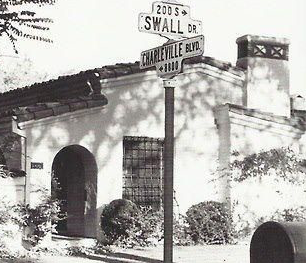
I can’t find any hard evidence that he lived there, or even in the neighborhood, so I guess he was probably there just for a photo op.
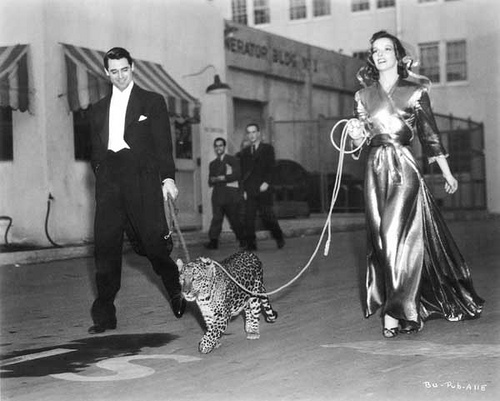
And then, much belatedly, it occurred to me that maybe the picture is an ironic take on his appearance in Bringing Up Baby, but I don’t have any hard evidence for that either.

Published on March 11, 2018 13:46
March 1, 2018
WALKING AND LEANING
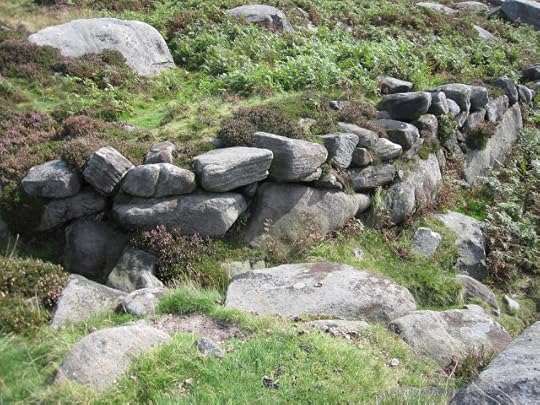
One of the smaller regrets in my life is that when I was unemployed in Sheffield in the 1980s I turned down the chance to become an apprentice dry stone waller. How very different life might have been. Maybe – and I realize this is very, very unlikely – I could have ended up as land artist in the mold of Andy Goldsworthy.

There’s a new documentary about him, titled Leaning Into the Wind, and in the trailer he says, “There are two ways of looking at the world. You can walk down the path, or you can walk through the hedge.”
Does anybody still use that phrase “dragged through a hedge backwards”? My mother used to say it about me when I was looking particularly disheveled, but as I used to point out, if you’re pulled through a hedge backwards you’re going to look rather better than if you’re pulled through it forwards.
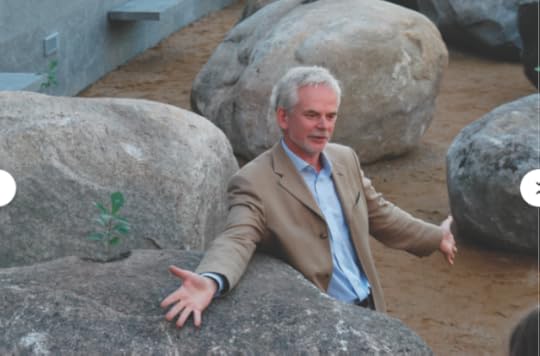
Andy Goldsworthy has something in common with walking artists like Richard Long and Hamish Fulton, but as far as I can tell he doesn’t really use walking as part of his practice. However, since he’s usually working outdoors, making site specific sculptures, then I suppose he must do a certain amount of walking to get to and from the sites. The piece below at Storm King, titled Storm King Wall is a length of dry stone walling that runs to 2,278 feet, so a certain amount of walking is required just to get from one end of it to the other.

Actually it’s not even that simple – the wall disappears, as it were, into water and emerges on the other side, so unless you can walk on water a detour is involved.
I’ve also walked around a Goldsworthy in the Yorkshire Sculpture Park, this one, called Hanging Trees:
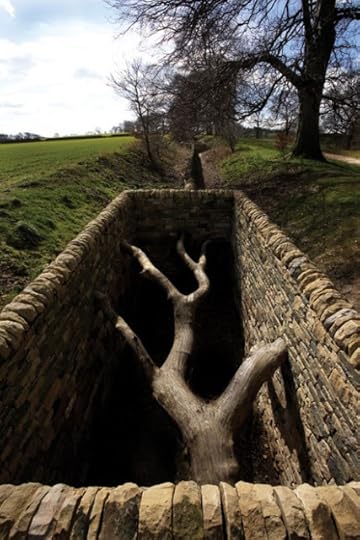
I know I also saw his Garden of Stones at The Museum of Jewish Heritage in New York but as far as I can remember, at the time I went there you weren’t allowed to walk in it.
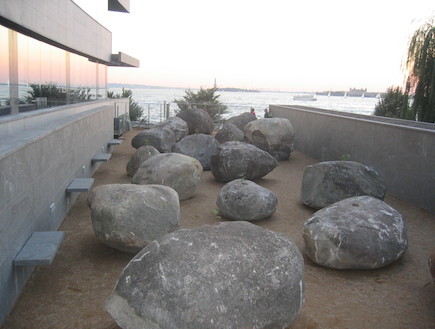
The image below on the museum website suggests you can walk there now, though obviously not yet far.

As far as I can see, there's an absence both of paths and hedges.

Published on March 01, 2018 21:52
February 28, 2018
SCRUTABLE
One way or another I've been walking past this building on Franklin Avenue for the best part of 15 years, and it still intrigues me, and moves me in some quiet way. Things around it change - a brand new urban park has just been built nearby, and it's close enough to the Hollywood Freeway that a homeless tent city has grown up nearby but it remains square and solid and inscrutable, essentially unchanged, even if it's a bit frayed at the edges.
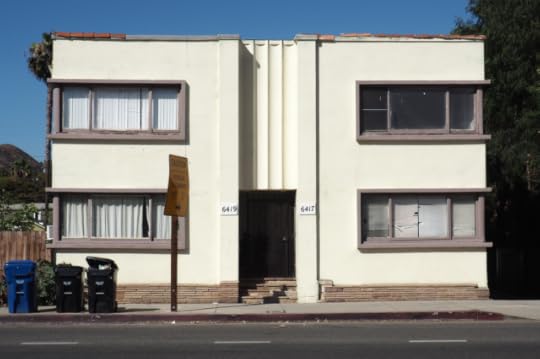
I guess it's the inscrutability that's the appeal. It looks like a bit of old Hollywood. It's not stylish enough to be celebrated as a classic and yet there is something basic and elegant about it, something modernist and formal - form following function. I like that in a building that I walk past.
It used to look like this:

And this:
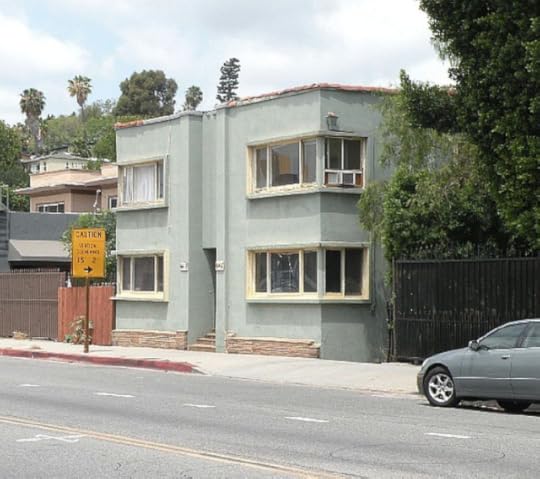


I guess it's the inscrutability that's the appeal. It looks like a bit of old Hollywood. It's not stylish enough to be celebrated as a classic and yet there is something basic and elegant about it, something modernist and formal - form following function. I like that in a building that I walk past.
It used to look like this:

And this:


Published on February 28, 2018 12:04
February 21, 2018
WOKE WALKING
Published on February 21, 2018 10:01
February 19, 2018
DON'T GO THERE
Published on February 19, 2018 21:29
SAINTLY WALKING

I was in Bristol, in England, and I walked from the station to a place called the Paintworks – a new “creative quarter” if the website is to be believed.

Not much of a walk, scarcely more than a mile, though it was cold and damp, and I did walk the same route back again, but long enough to get shouted at by a bicyclist – true I was walking in a cycle lane - and to see some ruin in the distance:

And some more ruin close up – I do have a bit of a thing for obelisks, ruined or otherwise:
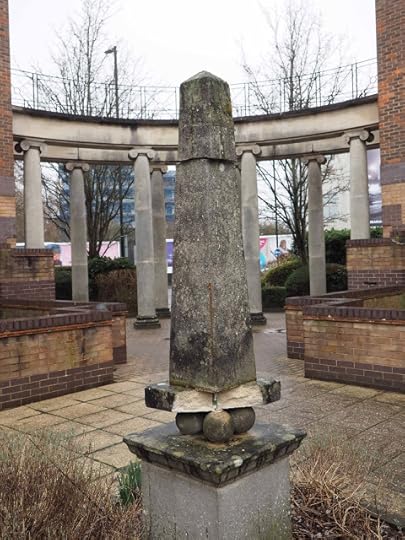
And especially there was time to see a couple of quirky depictions of walkers painted on the ground – the saintly fellow at the top of this post and this one carrying a ladder:

Sometimes it doesn’t take much to make you think you’ve had a decent walk.
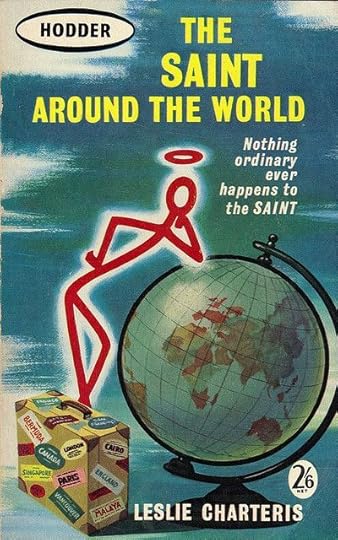

Published on February 19, 2018 12:33
Geoff Nicholson's Blog
- Geoff Nicholson's profile
- 55 followers
Geoff Nicholson isn't a Goodreads Author
(yet),
but they
do have a blog,
so here are some recent posts imported from
their feed.





